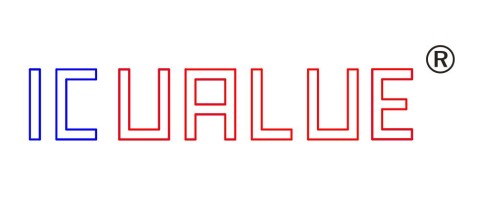Wafer Butterfly Valves
Most wafer butterfly valve designs have four holes aligned with the connecting pipe. The valve is designed to be sandwiched between two flanges in piping. Most pair clamp butterfly valves meet most flange standards. Rubber or EPDM seats create a very strong seal between valve and flange connection.
Unlike lug butterfly valves, wafer butterfly valves cannot be used as pipe end or line end service. If either side of THE valve NEEDS maintenance, THE ENTIRE line MUST be CLOSED. Wafer butterfly valves are manufactured to be compatible with pneumatic or electric drive. Disc and seat materials shall be determined according to the application and flow medium.
What Is Wafer Butterfly Valve?
A wafer butterfly valve is a type of valve used to control the flow of fluids in a piping system. This valve consists of a disk-shaped element that is attached to a stem. The disk can rotate around the stem, allowing the valve to open and close. The disk can also seal against the body of the valve, which prevents fluid flow when the valve is closed.
The majority of butterfly valves in wafer-style are designed with four holes that align to the pipeline. This valve clamps between two flanges within the pipe work. Most of the flange standards are compatible with wafer butterfly valves. The valve seat is made of rubber or EPDM and provides a substantial seal between the valve’s connection and the flange.
Wafer-style butterfly vas is not compatible with pipe ends or end-of-line uses. If the valve needs maintenance, it is necessary to shut down the complete line. The Wafer-style butterfly valves can be used with either electric or pneumatic actuation. Disc and seat material should also be considered based on the application and flow media.
Advantages Of Wafer Butterfly Valve
A wafer butterfly valve is a kind of valve with a circular disc attached to a rod in the center. The disc is able to rotate freely around the rod, and a rubber seat surrounds it. When the disc is in the closed position, the seat creates a seal that prevents the flow of fluid. The fluid can flow freely through the valve when the disc is in the open position. There are many advantages of a wafer butterfly valve, and here are 5 of them:
- Wafer butterfly valves are very versatile and can be used in various industries.
- Wafer butterfly valves offer a very tight seal, which is ideal for applications where the leakage is not tolerable.
- Wafer butterfly valves are very easy to install and maintain.
- Wafer butterfly valves are very cost-effective, making them an excellent choice for budget-conscious consumers.
- Wafer butterfly valves have an excellent flow characteristic. They provide a linear control of flow and have a shallow pressure drop.
Disadvantages Of Wafer Butterfly Valve
Wafer butterfly valves are a popular choice for many industrial applications. However, you should be aware of some disadvantages to using this type of valve before making a decision.
- Limited Flow Control: Wafer butterfly valves have a limited range of flow control. This means that you may not be able to get the precise flow control you need for your application.
- Higher Pressure Drop: Wafer butterfly valves can cause a higher pressure drop across the valve. This can lead to decreased efficiency and increased costs.
- Vulnerable to Clogging: The design of wafer butterfly valves makes them vulnerable to clogging. This can be a severe problem if the valve is not regularly cleaned.
How To Choose The Best Butterfly Valve?
There are many different types of butterfly valves on the market, each with its own advantages and disadvantages. So how do you know which one is right for your needs? Below, we’ll discuss five key factors to consider when choosing a butterfly valve.
- Material
The first factor to consider is the material the valve is made of. Butterfly valves are available in a variety of materials, including metals like stainless steel and aluminum, as well as plastics like PVC and PP. Each material has its own advantages and disadvantages, so it’s essential to choose the right one for your needs.
- Temperature
Another critical factor to consider is the temperature range the valve can handle. Some materials are only suitable for low-temperature applications, while others can handle high-temperature fluids. Make sure to choose a valve that can control the temperatures you expect to encounter.
- Pressure
The third factor to consider is the pressure rating of the valve. Butterfly valves are available in various pressure ratings, so make sure to choose one that can handle the pressures you expect to encounter.
- Connection
The fourth factor to consider is the type of connection the valve has. Some butterfly valves have threaded connections, while others have flanged connections. Choose the type of connection that is compatible with your system.
- Actuation
The final factor to consider is how the valve will be actuated. Some butterfly valves are manually operated, while others are pneumatically or electrically actuated. Choose the type of actuation that is best suited for your application.




